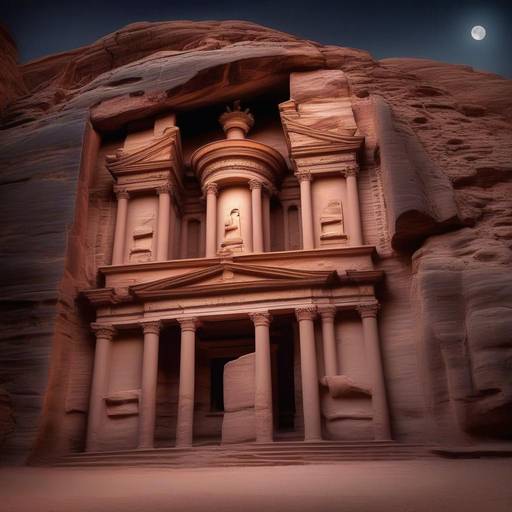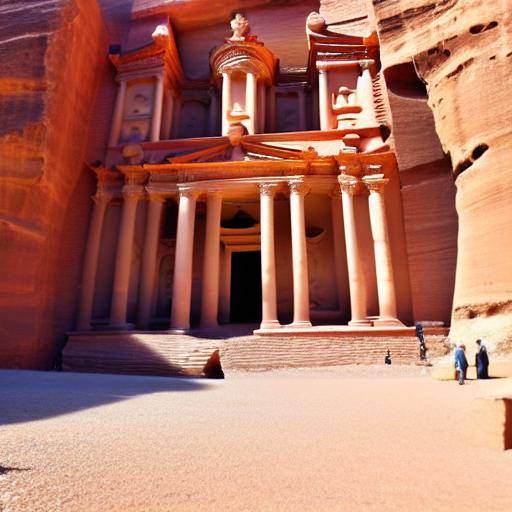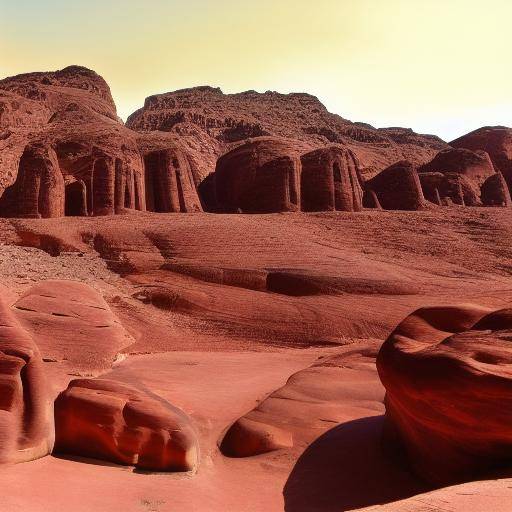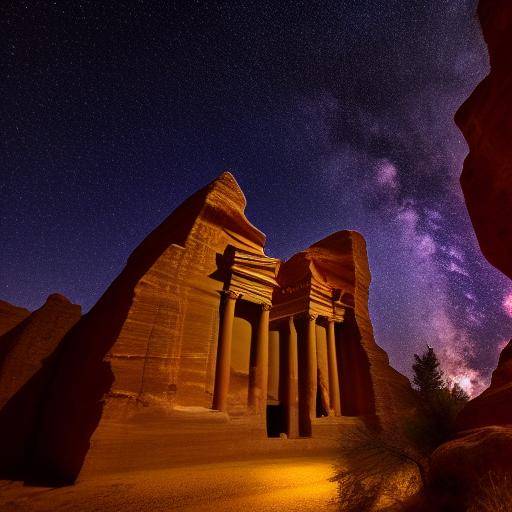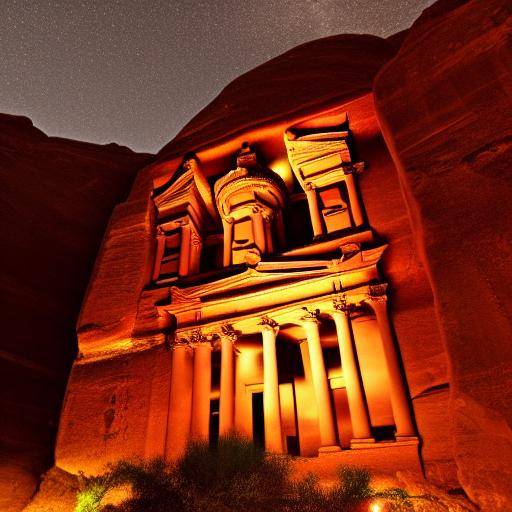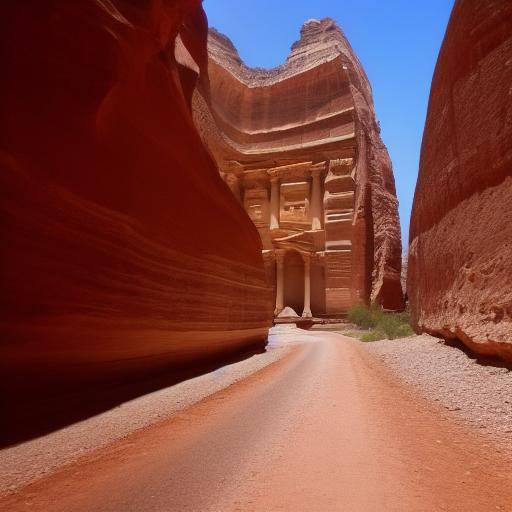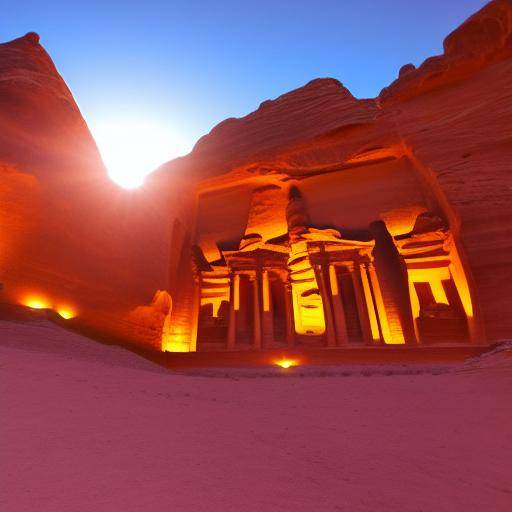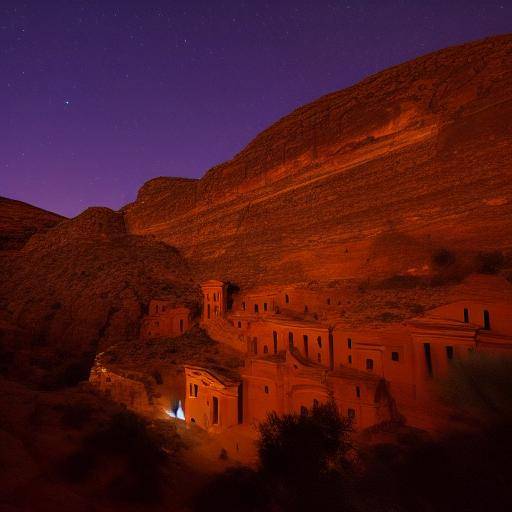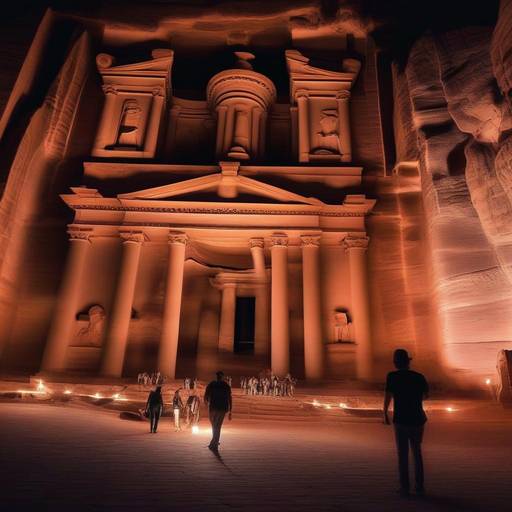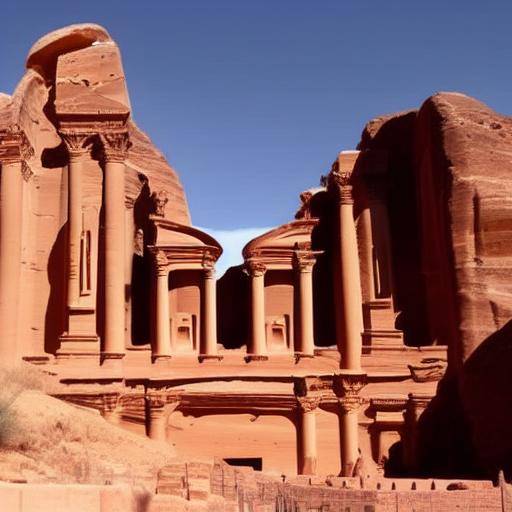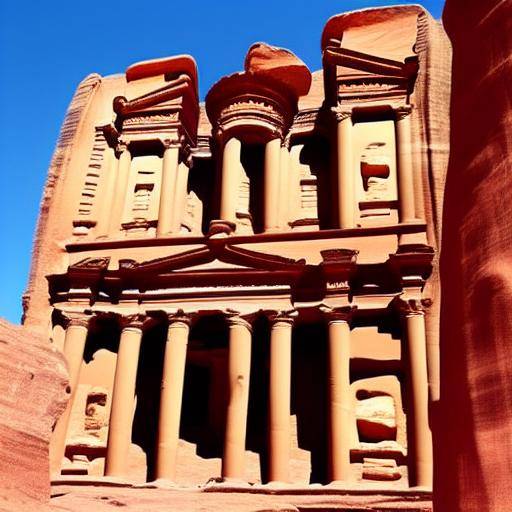
Welcome to a fascinating journey through the art and historical wonders of Petra in Jordan! In this comprehensive guide, we will explore the rich history, the spectacular architecture and the stunning sculptures that make Petra a unique place in the world. From ancient inscriptions to neoclassical influence in architecture, we will discover how Jordanian art has left an indelible mark on this ancient and magical site.
Introduction
The mystery and the greatness of Petra
Majestic buildings sculpted on the rocks, millennial engravings and a rich history unite in Petra, the ancient Nabatean enclave located south of Jordan. Known as "the pink city" by the pink color of the rocks in which it is found, Petra is an archaeological treasure recognized as World Heritage by UNESCO.
In this journey, we will immerse ourselves in the legacy of Jordanian art that manifests itself in sculptures, inscriptions and neoclassical architecture that lasts in the ruins of Petra. We will discover how this jewel of the ancient world has captivated travelers, historians and artists over the centuries, and how its cultural impact continues to resonate today.
History and Background
Origins and evolution of Petra
The history of Petra dates back to the prehistoric era, when the region was inhabited by nomadic tribes. However, it was in the sixth century BC when the Nebateans, skilled traders, transformed Petra into a thriving commercial city. His strategic location on the caravan route gave him a significant influence on incense trade, spices and other exotic goods.
Over time, Petra became a cultural and religious centre, Roman settlement and eventually fell into oblivion until its rediscovery by the Swiss explorer Johann Ludwig Burckhardt in 1812. Since then, the archaeological site of Petra has captivated visitors from around the world, inspiring artists, archaeologists and history lovers.
The inscriptions and sculptures that decorate the imposing facades and structures carved on the rock are silent witnesses of cultural diversity, architectural innovation and artistic ingenuity of past civilizations. The Nabateans left an indelible mark on Petra through their sculptural abilities and inscriptions that narrate their traditions, beliefs and commercial prowess.
Analysis in Deep
Jordanian art in Petra: current challenges and trends
The architectural and artistic heritage of Petra faces significant challenges, from the preservation and restoration of structures to the sustainable management of tourism. Despite these challenges, Petra remains an amazing testimony to Jordanian art, attracting researchers, artists and history lovers who seek to understand its profound cultural significance.
Jordanian art in Petra not only represents the past, but also influences the present and the future. The sculptures, inscriptions and the majestic neoclassical architecture that makes up the Petra landscape continue to inspire contemporary artists, architects and conservation experts. Its influence extends far beyond its geographical borders, reaching global audiences through exhibitions, publications and praises in the artistic community.
Comprehensive review
Modern Jordanian art applications: a look at the future
Jordanian art, particularly the legacy of Petra, has influenced contemporary aesthetics and design, serving as a source of inspiration for a wide range of artistic disciplines. The exquisite combination of sculptures, inscriptions and neoclassical architecture continues to fascinate architects, artists and designers from around the world. Its impact transcends the artistic sphere, influencing fashion, cinema, literature and modern architecture. The timeless character of Petra's artistic creations demonstrates its continuing relevance in the contemporary cultural landscape.
Comparative analysis
Petra, Jordan and Jordanian art: synergies and particularities
By comparing Petra to other archaeological sites, the singularity of its Jordanian art becomes evident. While Petra's neoclassical architecture reflects grecorromean influences, sculptures and inscriptions account for the rich Nabatean tradition. This amalgam of styles and techniques places Petra as a unique artistic and cultural landmark in the Middle East, differing from other ancient cities.
For its part, the historical and artistic wealth of Petra and Jordan as a whole highlights the deep connection with the ancient world, offering visitors a window to the past through their artistic expressions.
Practical Tips and Accessible Recommendations
Enjoying and understanding the Jordanian art of Petra: Travel Tips
If you plan to visit Petra, we invite you to immerse yourself in your Jordanian art as follows:
- Walk the winding cliffs to discover the architectural wonder of El Siq, where you can appreciate the intricate engravings and the inscriptions that adorn the walls.
- Admire the iconic facade of the Treasury, Al-Khazneh, and closely observe the Nebatean sculptures that decorate it, marveling at your detail and symbolism.
- Explore the temples, tombs and sculpted amphitheaters on the rock, closely observing the inscriptions that narrate the history and culture of Petra.
Industry Visions and Expert Reviews
Interview with the expert archaeologist at Petra, Dr. Omar Al-Muheisen
"The Jordanian art in Petra is a remarkable testimony of the artistic and technical mastery of the Nebatians. The unique combination of sculptures, inscriptions and neoclassical architecture reveals an artistic sophistication that amazes visitors and scholars alike. Protecting and preserving this artistic legacy is crucial to ensuring that future generations can admire its beauty and appreciate its historical significance. "
Case Studies and Practical Applications in Real Life
The impact of Jordanian art on contemporary architectural design
The Jordanian art of Petra has inspired numerous projects of contemporary architectural design, demonstrating its lasting influence. From the integration of Nebatian motifs into modern facades to the reinterpretation of sculptures in contemporary art works, Petra's artistic legacy continues to stimulate creativity and innovation in architecture.
Future Trends and Predictions
The Future of Jordanian Art in a Changing World
As the awareness and appreciation of the Jordanian art of Petra expand, the interest in its preservation and study is expected to continue to grow. A renewed focus is on sustainable conservation, archaeological research and cultural diffusion in order to ensure that Petra's artistic and architectural heritage perishes for generations to come.
Conclusion and Frequently Asked Questions
Conclusion
In conclusion, Jordanian art in the ruins of Petra is an invaluable treasure that embodies creativity, technical skill and cultural traditions of ancient civilizations. From sculptures to inscriptions and neoclassical architecture, Petra continues to amaze the world with its artistic legacy, inspiring artists, researchers and travelers alike. Its cultural relevance and impact on contemporary art disciplines offer a unique look at the past and an inexhaustible inspiration for the future.
Frequently asked questions
1. What is the cultural meaning of the Nabatean sculptures in Petra?
Nabatean sculptures in Petra represent mythological figures, deities, leaders and animals, providing a unique window to the worldview and beliefs of the ancient Nebatean culture. These sculptures have a profound religious, political and artistic meaning that enriches our understanding of the Nabatean civilization.
2. How has the Jordanian art of Petra influenced contemporary architecture?
The influence of the Jordanian art of Petra in contemporary architecture is manifested in the integration of architectural motifs, techniques and styles that pay homage to the legacy of Petra. Nabatea inspiration has been translated into modern designs that seek to capture the essence and beauty of ancient Jordanian art.
3. What measures are being taken to preserve Jordanian art in Petra?
The preservation of Jordanian art in Petra is a priority for Jordanian authorities and international organizations. Conservation programs, archaeological research and tourism management measures are implemented to protect sculptures, registrations and neoclassical structures in Petra.
4. What are the current challenges facing the preservation of Jordanian art in Petra?
The challenges include natural erosion, the impact of tourism, the restoration of deteriorated structures and the need to balance conservation with public access. These challenges require multidisciplinary and collaborative approaches to ensure the long-term preservation of Jordanian art in Petra.
5. What contemporary artistic or cultural experiences are derived from the Jordanian art of Petra?
The Jordanian art of Petra has inspired artistic exhibitions, public art projects, academic research and interdisciplinary collaborations that explore the contemporary resonance of Petra's legacy in the current context.
6. How can I contribute to the preservation and dissemination of the Jordanian art of Petra?
You can contribute by supporting conservation projects, promoting awareness of the cultural importance of Petra, participating in educational visits and respecting preservation regulations when visiting the archaeological site.
With this, we concluded our journey through Jordanian art in the ruins of Petra. We hope that this immersion has provided you with a deeper understanding and renewed appreciation of the extraordinary cultural heritage that resides in this magnificent enclave. We encourage you to continue exploring and learning about the wealth of Jordanian art and its lasting impact on Petra, Jordan, and beyond. May your curiosity and passion for Jordanian art continue to inspire you on your journey through the world of cultural and artistic heritage!

